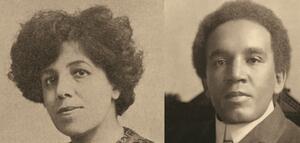
Spanning Boundaries in Translational Research
Guest post by Pei Pei Liu, author of Invisible Forces: Motivational Supports and Challenges in High School and College Classes.
"It was the picture of her sitting there, creating a juncture where two languages converged…it was her ability to join, the way she was drawing together all the people in the room, that we each might know exactly the same things as the others…I understood that nothing in the room…was any finer than this act of joining…Like storytelling, that incessant loving rush of explaining and repositioning and telling again, all for the sake of finding something shared, something mutually recognized—so interpreting seemed to me. It seemed a kind of goodness."
— Leah Hager Cohen, “Interpreting.” In Train Go Sorry, pp. 250-251
In the above excerpt, Cohen, the hearing granddaughter of deaf adults, is describing her childhood impressions of watching a sign language interpreter. The interpreter initially seems imbued with grace but then begins to struggle to keep up. When Cohen goes on to become an ASL interpreter herself, she reflects on the challenges of the role, including the fact that “for every language except sign language, the ideal interpreting situation has the interpreter working in one direction only: interpreting into the mother tongue…the reason being that the most authentic and faithful interpretation can be rendered only by a native speaker.” Yet despite her complexifying understanding of her work, she never fully abandons that initial ideal as something to strive for.
This perspective on interpreting is relevant to the enduring challenges of research-to-practice applications in educational psychology. Scholars have long lamented the seeming intractability of this problem, wondering why it seems so difficult to “translate” empirical findings into practical classroom strategies. I would argue that a key reason is that most researchers not only lack fluency in the discourse of pedagogy and practice, but also fail to recognize this discourse as equal to scholars’ in status and legitimacy—thus necessitating a genuine process of translation, of interpretation. The “implications for practice” I encounter in most research articles tend toward both oversimplification and didacticism, reflecting an implicit power differential in which researchers are the producers of the knowledge that teachers are responsible for receiving and utilizing. There is little attention paid to “finding something shared, something mutually recognized.”
Solving the problem of research-to-practice “translation” therefore requires recognizing the importance of having interpreters: individuals who can span the boundaries between psychological research and classroom pedagogy because they are equally adept in each domain. These interpreters can be third parties, go-betweens, but they can also be researchers with the experience and skill set to translate their work more effectively than traditional scholars.
I strive in my own work to be a boundary spanner in this way. I spent more years—and formative ones, in my twenties and early thirties—teaching in high school classrooms than I spent in grad school learning how to do research. In this respect, teaching is my “mother tongue” and the lens through which I engage in and with research. This translational engagement takes different forms, from writing about the researcher-participant relationship to co-authoring articles with teachers to using research methods less commonly seen in educational psychology.
In Invisible Forces, for example, I use portraiture to explore the instructional approaches of high school and college writing educators through the lens of motivation theory. Eschewing the subjectless passive voice and reductive, decontextualized descriptions of teaching practices still found in much scholarly research, my portraits knit together classroom observations with teacher interviews into rich narratives that employ aesthetic principles, including the use of metaphor, to “draw together all the people in the room”—the reader, me as portraitist, and the participants themselves—in examining teaching and classrooms as complex social contexts for supporting student motivation.
When high school teacher Diane Bauer habitually uses “we” instead of “I” to describe her pedagogy and decision-making, can her teaching be understood in isolation from her endorsement of the school culture, embodied in the decade’s worth of school T-shirts pinned to her classroom walls? Do the challenges that college instructor Liz Cartwright encounters in helping her students learn from failure mirror the fact that she herself, as an adjunct, has limited opportunities for professional growth and development?
In fully considering not only what these educators are doing but the multilayered reasons why, my goal is to produce a nuanced portrayal of teaching that resonates with fellow educators while also offering a scholarly interpretation using concepts and principles from motivation theory as a new filter on their perceptions. That it is an offer, rather than a prescription, is key. Portraiture yields a kind of interpretive storytelling that is grounded in empiricism, leveraging an understanding that narrative is central to meaning-making, connection, and self-reflection—essential processes for uptake, buy-in, and lasting change.
Invisible Forces invites readers to consider the decisions that these educators make, the reasons for the decisions, and their outcomes; and to reflect on whether you, as an educator, would make the same decisions. My portraits trust in the professional expertise of participants to explain their thinking and in that of practitioner and scholarly readers alike to evaluate what they are reading and the quality of my proffered interpretation. I hope my work functions as an “act of joining,” successfully spanning boundaries and creating a juncture for researchers and practitioners in the translation process.
Pei Pei Liu was an English teacher at Charlestown High School in Boston, Massachusetts and the American College of Sofia in Sofia, Bulgaria. She is now Assistant Professor of Education at Colby College and the author of Invisible Forces: Motivational Supports and Challenges in High School and College Classes.


